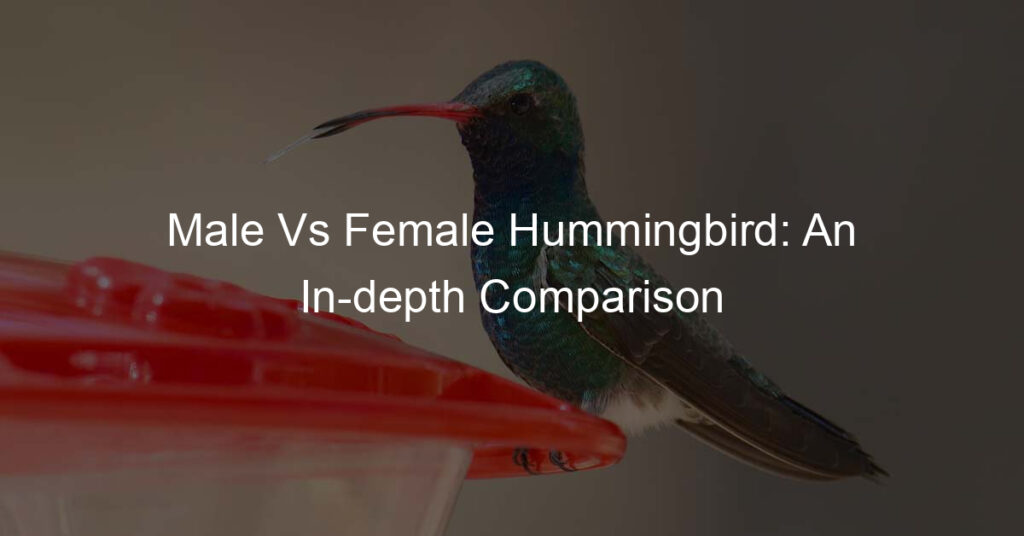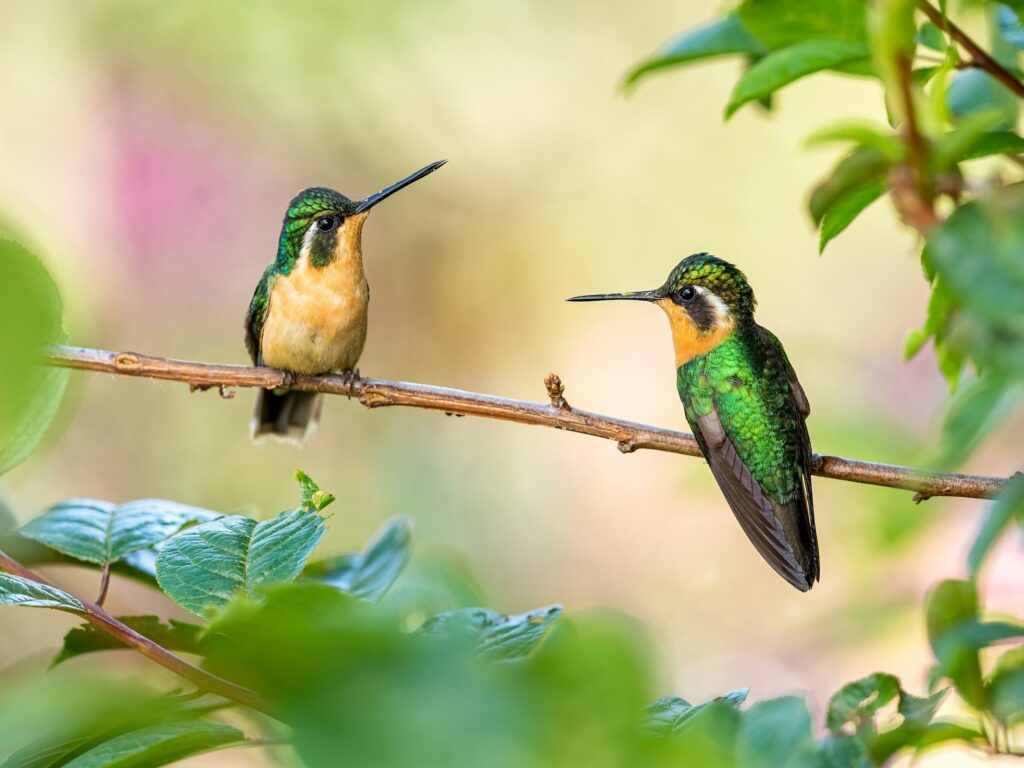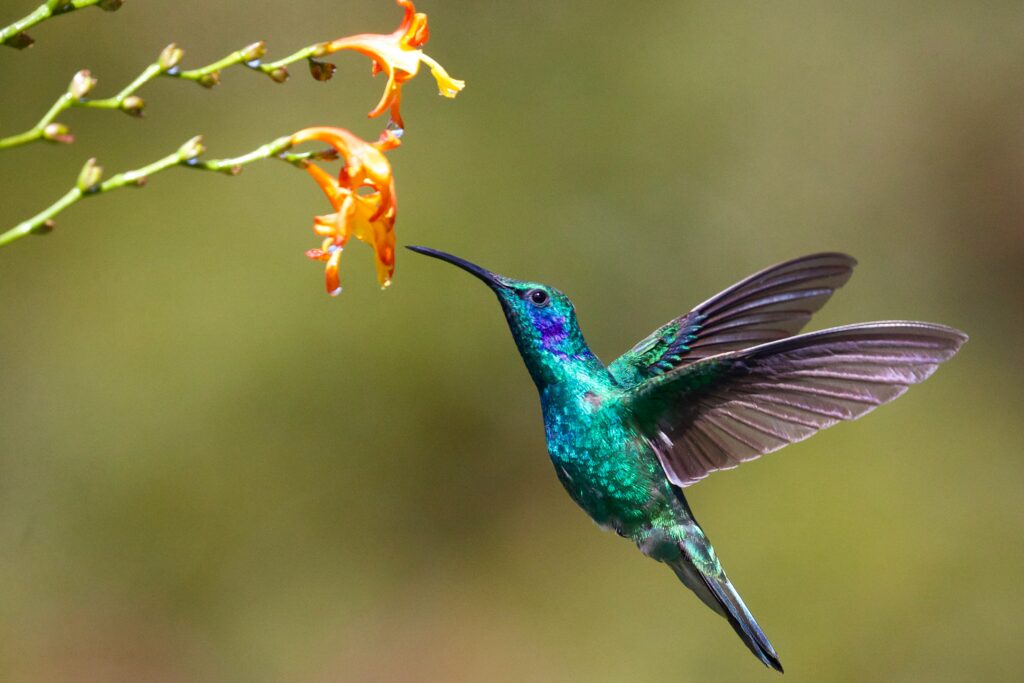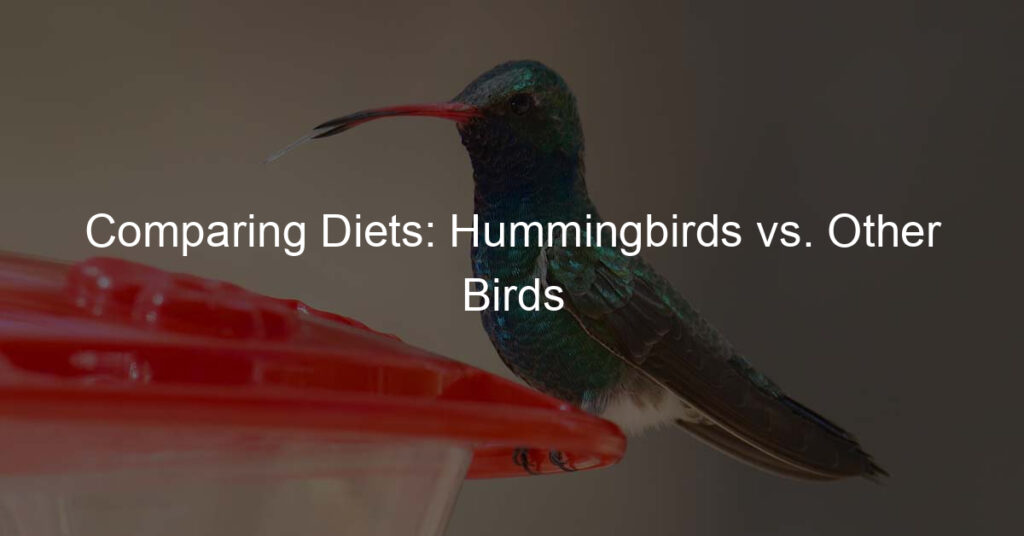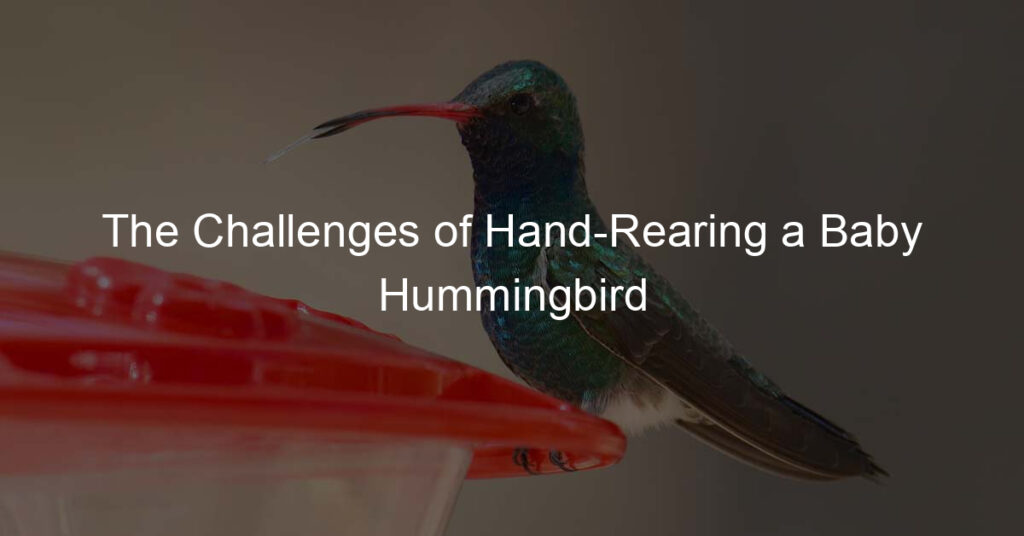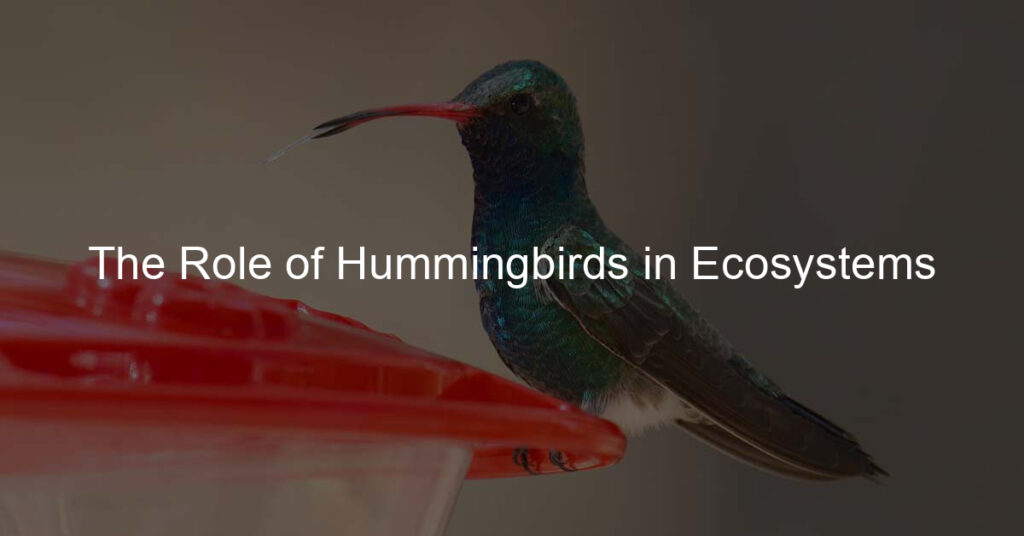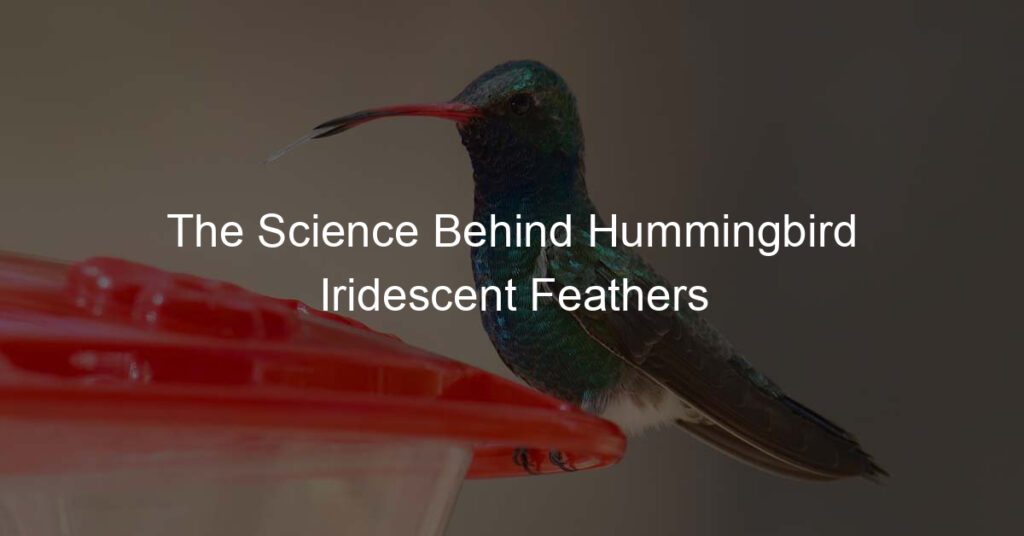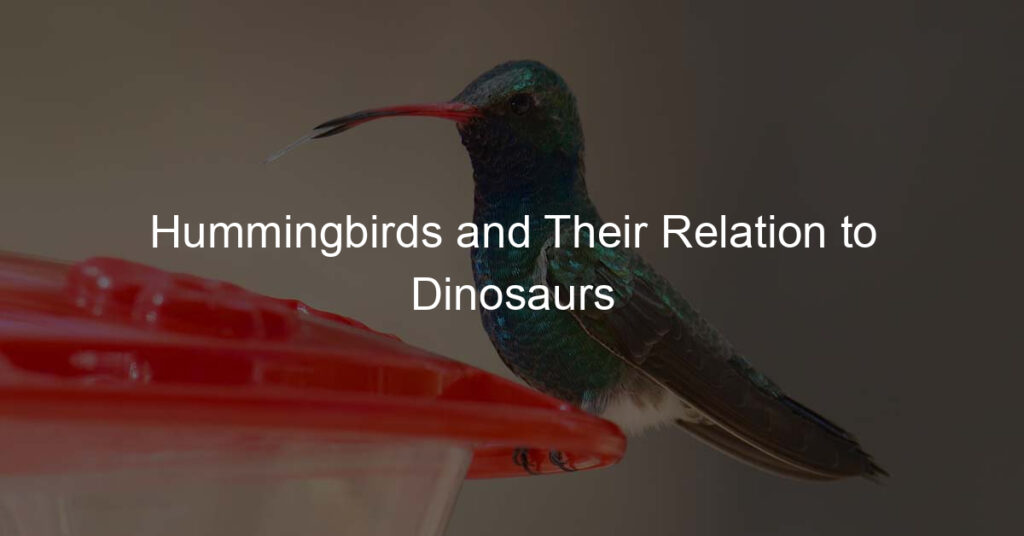Hummingbirds are fascinating creatures that captivate us with their vibrant colors, incredible agility, and lightning-fast wing beats. One of the most intriguing aspects of these tiny birds is the difference between male and female hummingbirds. Understanding the distinctions between the sexes is not only essential for birdwatchers but also provides insight into the unique behaviors and habits each gender exhibits.
Physical differences between male and female hummingbirds can be subtle or stark, depending on the species. Generally, males are smaller than females and tend to have more dazzling plumage, as their iridescent feathers are essential for attracting potential mates. In contrast, female hummingbirds usually have more muted colors that help them blend in with their surroundings, offering them protection while nesting and raising their young.
When it comes to behavior, male and female hummingbirds are quite distinctive from each other as well, which is especially evident during mating season. Males put on elaborate dances and displays to impress females, while females focus on finding suitable nesting sites and caring for their offspring. Feeding habits and preferences may also vary, with some species having gender-specific roles in foraging and food distribution.
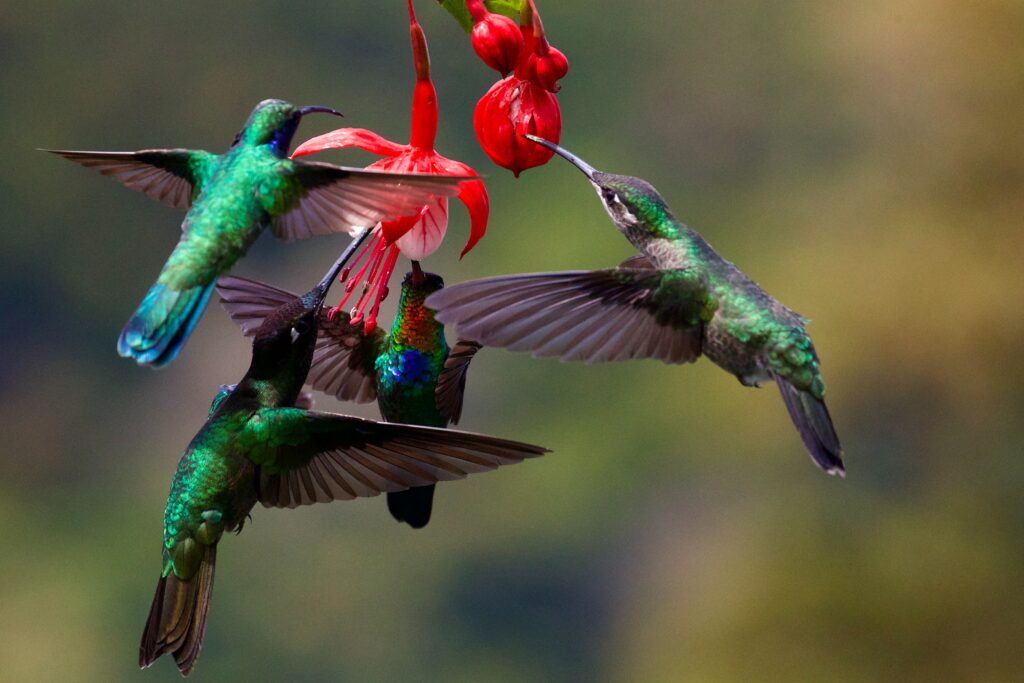
Key Takeaways
- Male and female hummingbirds have distinct physical traits and behaviors
- Mating displays are a primary focus for male hummingbirds, while females prioritize nesting and offspring care
- Different roles in feeding and foraging may exist depending on the hummingbird species
Physical Differences
Size and Weight
In my observations, I’ve noticed that there are size and weight differences between male and female hummingbirds. Generally, female hummingbirds tend to be slightly larger and heavier than their male counterparts. For example, female Black-chinned Hummingbirds usually weigh around 3.5 grams, whereas males weigh approximately 3 grams. However, there are exceptions, such as the Giant Hummingbird, where both sexes are of similar sizes.
Plumage Coloration
As a bird enthusiast, I’ve observed that plumage coloration is among the most striking differences between male and female hummingbirds. Males usually exhibit bright, iridescent colors to attract females during the mating season. They often display vibrant shades of red, green, blue, orange, pink, and purple. In contrast, female hummingbirds tend to have more muted, dull colors, primarily consisting of various shades of green, white, and some darker hues.
Take the male Black-chinned Hummingbird as an example; it has a bright, iridescent purple band on its throat, while the female has a white throat with some dark spots. Another example is the male Ruby-throated Hummingbird, which has an unmistakable, brilliant red throat, whereas the female has a pale, white throat.
Tail Feathers
From my experience watching hummingbirds, I’ve noticed that tail feathers can also be sexually dimorphic in some species. Males often have more elongated, pointed tail feathers, while females have more rounded, shorter ones. The difference in tail feathers can be subtle or quite pronounced, depending on the species.
In summary, I’ve found that male and female hummingbirds exhibit physical differences in size, weight, plumage coloration, and tail feathers, making them sexually dimorphic. These variations help us identify their sex and showcase the fascinating diversity among these small yet captivating birds.
Behavioral Differences
As someone who observes hummingbirds, I have noticed some interesting distinctions between male and female hummingbirds when it comes to behaviors. This section will discuss the differences in aggressive behavior, courtship displays, and nesting behavior.
Aggressive Behavior
Male hummingbirds tend to be more aggressive and territorial compared to their female counterparts. They sport a bright-colored gorget around the throat region, which they use to ward off rivals and predators. The gorget can be found in various shades, such as bright red in the rufous hummingbird. Males mark their territories by exhibiting aggressive behaviors such as chasing away intruders and engaging in aerial battles. On the other hand, females show aggression mainly in the nesting season to protect their young ones.
Courtship Displays
Male hummingbirds use elaborate courtship displays to attract potential mates. The courtship displays involve vibrant physical antics like swooping flights, showing off their colorful feathers, especially their tail plumage, and performing intricate aerial dances. Some species, like the bee hummingbird, are known to exhibit vocalizations during courtship. It is important to note that not all hummingbird species mate for life; thus, these displays are a crucial aspect of their mating rituals.
In contrast, female hummingbirds have a relatively subdued physical appearance. They lack the vibrant, colorful feathers that males possess, which helps them avoid predators while incubating their eggs. Female hummingbirds also prefer to stay close to the nesting site and do not engage in extravagant courtship displays.
Nesting Behavior
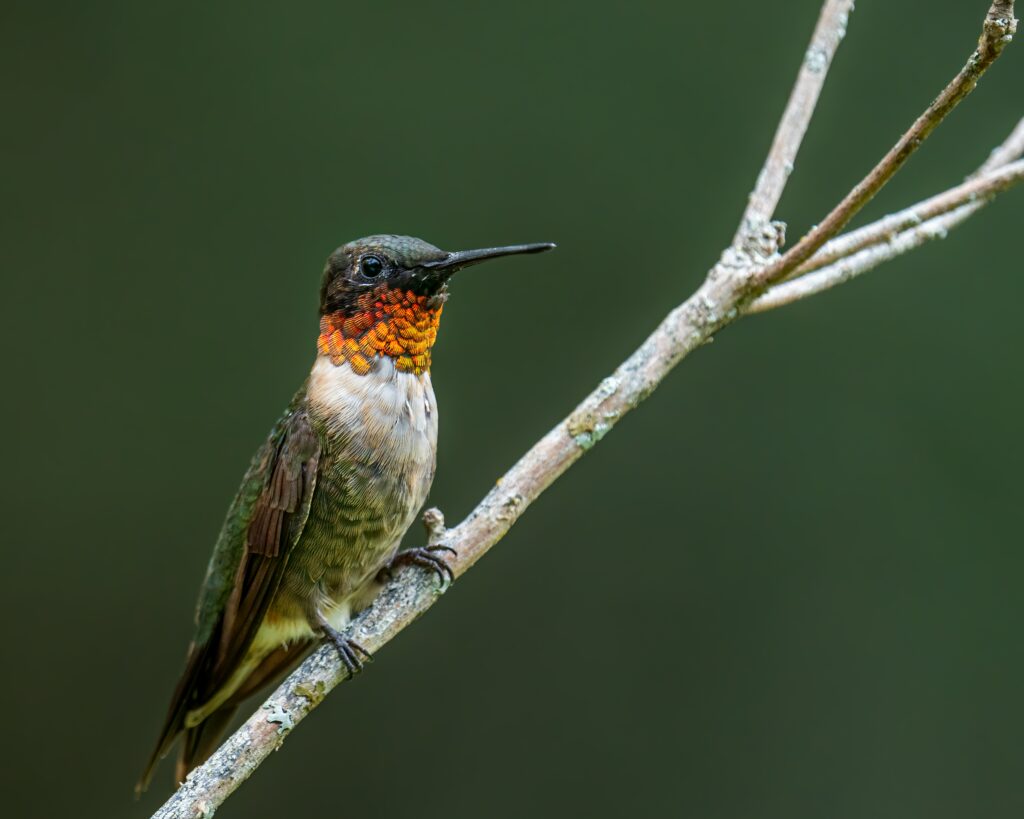
Nesting behavior is another aspect where male and female hummingbirds differ significantly. Female hummingbirds bear the responsibility of building the nest, incubating the eggs, and caring for the babies. They often rely on the camouflage their duller plumage provides to remain inconspicuous while tending to their young.
Male hummingbirds, on the other hand, do not participate in any form of nest building, incubation, or nurturing of the young. Juvenile hummingbirds resemble their mothers in physical appearance, which helps them avoid predation during their immature stage. As they mature and approach migration, the young male hummingbirds will eventually start exhibiting gender-specific plumage and develop their unique behavioral traits.
Nesting and Breeding
Nest Building
I have observed that both male and female hummingbirds play a role in the nesting process, but it is mainly the female who takes on the responsibility of nest building. The nests are typically small, made from plant fibers and spider silk, and sometimes adorned with lichen and moss to camouflage their appearance. The female hummingbird will choose a secure location, such as on a tree branch or shrub, at a height that offers protection from predators.
Egg Laying and Incubation
As the breeding season approaches, the female hummingbird’s main task is laying eggs. She will lay one to three eggs, which are tiny and white. The male’s role during this time is primarily to defend the territory around the hummingbird feeder and nesting site.
I have found that the female is responsible for incubating the eggs. She will sit on the nest and use her body heat to ensure the eggs are kept at a consistent temperature. The incubation process takes about 13 to 22 days, and during this time, the female will also leave the nest periodically to feed on the nectar recipe offered by nearby hummingbird feeders.
Raising Young Hummingbirds
Once the eggs hatch, I notice that the female hummingbird takes on the role of raising the young. She is responsible for feeding them a diet of insects and nectar, which provides the essential nutrients needed for their growth and development. The male will still defend the territory, ensuring the nest remains undisturbed.
Young hummingbirds are born with few feathers, but their beautiful, iridescent green backs and tail feathers will begin to develop as they grow. The appearance of the male and female juveniles may seem plainer than that of their parents, but by observing their nesting behavior, I can easily identify which bird is male or female. It takes about 18 to 30 days for the young hummingbirds to fledge and become independent, at which point they will start to visit hummingbird feeders on their own.
Feeding Habits and Preferences
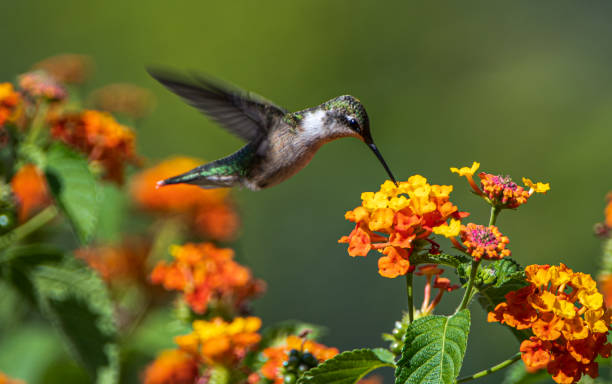
Hummingbirds have an insatiable appetite, and as such, they are fascinating to observe. When examining the feeding habits of male and female hummingbirds, we must consider various factors, including hummingbird feeders, nectar, and natural food sources. In this section, I will discuss these aspects in regard to both male and female hummingbirds.
Hummingbird Feeders and Nectar
As a bird enthusiast, I have observed that both male and female hummingbirds frequently visit feeders throughout the day. However, I’ve noticed that their preferences may vary when it comes to the type of nectar they consume.
For instance, a small, fast flier, the ruby-throated hummingbird, requires a high-energy nectar recipe to fuel their lengthy migrations. On the other hand, female ruby-throated hummingbirds may consume a nectar recipe with a lower energy content during the breeding season to ensure optimal nutrition for egg-laying.
Moreover, I’ve found that the size and color of the hummingbird feeder can impact the frequency at which these birds visit. Brown and other muted colors might not be as attractive to hummingbirds as bright, vibrant hues. As a result, I always make sure my feeders are clean and filled with fresh nectar to accommodate the varying preferences of both male and female hummingbirds.
Natural Food Sources
In addition to nectar from feeders, hummingbirds also rely on natural food sources for survival. In my experience, male and female hummingbirds have slightly different preferences regarding their diet.
Males, characterized by their bright, iridescent plumage, tend to feed on a variety of insects, such as spiders and gnats. They also consume tree sap, providing them a vital energy source.
Female hummingbirds, typically smaller and adorned with brown feathers, also take advantage of these food sources but are also known to consume berries and fruit juice. This nutritious diet helps them build the strength necessary for nesting and raising their young.
In conclusion, male and female hummingbirds’ feeding habits and preferences constantly captivate me. By understanding their dietary needs, we can create an environment that nurtures and supports these fascinating creatures.
Hummingbirds of North America
Ruby-Throated Hummingbird
One of the most common hummingbirds in North America is the Ruby-Throated Hummingbird. As I’ve observed, males exhibit a stunning iridescent red throat patch which gives them their name. Interestingly, females and juveniles don’t have this bright red coloration. Instead, they display green, white, and gray feathers. In terms of size, these little birds average around 3-3.5 inches in length.
Rufous Hummingbird
The Rufous Hummingbird is another commonly spotted species in North America. I’ve found that the males have a striking rusty-orange color, while the females showcase a more muted pattern with a greenish back and an orange-speckled throat. Juvenile Rufous Hummingbirds resemble the females in color but have fewer markings on the throat. The size of these hummingbirds is comparable to the Ruby-Throated species, ranging from 3 to 3.5 inches.
Black-Chinned Hummingbird
The third species commonly seen in North America is the Black-Chinned Hummingbird. Adult males possess an iridescent purple band below their black chin, which can provide an impressive display when they catch the light just right. Females and juveniles, on the other hand, don’t have the purple band – they exhibit green and white feathers instead. Regarding their size, the Black-Chinned Hummingbirds are slightly smaller, averaging around 3-3.25 inches in length.
| Species | Adult Males | Adult Females/Juveniles | Size (in inches) |
|---|---|---|---|
| Ruby-Throated Hummingbird | Iridescent red throat patch | Green, white, gray | 3.0-3.5 |
| Rufous Hummingbird | Rusty-orange color | Greenish, orange throat | 3.0-3.5 |
| Black-Chinned Hummingbird | Black chin with purple band | Green, white | 3.0-3.25 |
To sum up, the Ruby-Throated, Rufous, and Black-Chinned Hummingbirds are among North America’s most prevalent hummingbird species, showcasing unique colors and patterns, particularly in males. In terms of size, there’s not much difference between them, allowing for easy comparison and identification.
Frequently Asked Questions
What are the key differences between male and female hummingbird appearances?
In terms of appearance, male and female hummingbirds exhibit several differences. Males generally have brighter and more colorful plumage around their throat and head. Females, on the other hand, tend to have more subdued colors and less ornate features. Additionally, female hummingbirds are usually larger than their male counterparts.
How do male and female hummingbirds behave differently during mating season?
During mating season, male hummingbirds engage in elaborate courtship displays to attract females. They perform aerial acrobatics, such as diving and hovering, while also producing melodic sounds or calls. Meanwhile, female hummingbirds play a more passive role, observing the male’s display and choosing a suitable mate based on his performance.
Which hummingbird species display the most variation between males and females?
Among the numerous hummingbird species, sexual dimorphism is generally prominent, with males and females exhibiting noticeable differences in appearance and behavior. The Long-tailed Sylph and the Marvelous Spatuletail are examples of species where males possess exceptionally long tail feathers and vibrant colors that distinguish them from the more modestly adorned females.
How can you distinguish a male from a female hummingbird?
Distinguishing male and female hummingbirds can be challenging, but you can rely on several cues. First, observe their size: females are generally larger than males. Secondly, check for differences in plumage coloration – males often have brighter, more colorful feathers, especially around the throat and head. Finally, pay attention to behavior: males are more aggressive and territorial, while females are more reserved and nurturing toward their young.
Why are male hummingbirds often more colorful than females?
Male hummingbirds are more colorful than females primarily because of sexual selection. The bright, iridescent hues serve to attract females during courtship displays, signaling the male’s health and desirability as a mate. In females, subdued coloration is advantageous as it provides camouflage and reduces predation risk while nesting and caring for their young.
Do male and female hummingbirds exhibit differences in territorial behavior?
Yes, male and female hummingbirds show differences in territorial behavior. Males are highly territorial, guarding their feeding and mating territories vigorously. They display aggression towards other males and even other bird species to protect their resources. On the other hand, females are less territorial and mainly focus on building nests, incubating eggs, and raising their offspring.

